
Squamous Cell Carcinoma (SCC) Treatment
Squamous cell carcinoma is common—and usually highly curable—when treated promptly. Our team focuses on precise diagnosis, thoughtful surgery, and clear prevention guidance to protect both your health and your appearance. At Aesthetic Dermatology, board-certified dermatologists explain each step calmly and transparently so you feel supported from evaluation through recovery.

What is Squamous Cell Carcinoma?
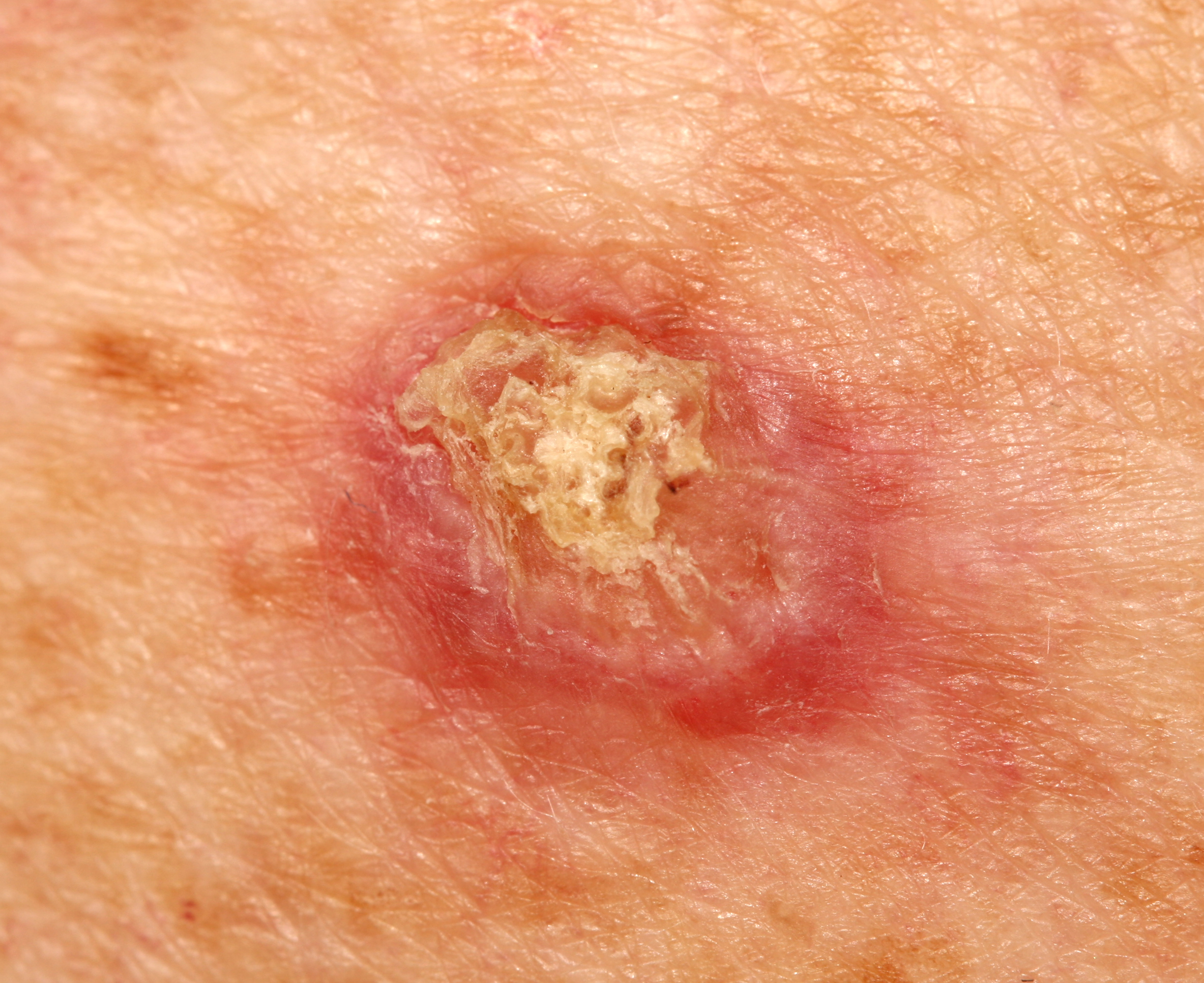
SCC arises from the skin’s squamous cells, usually on chronically sun-exposed sites such as the face, scalp, ears, neck, forearms, and hands. It often looks like a scaly, red or pink patch, a thick, crusted bump, a wart-like growth, or a non-healing sore that may be tender or bleed. Some lesions develop from actinic keratoses (precancerous spots). We use dermoscopy—a magnified, polarized light exam—to evaluate subsurface structures and decide if a biopsy is needed. While most SCCs are local, some can behave aggressively—especially on the lip, ear, scalp, or in scars—so timely, expert care matters.
Benefits of SCC Treatment
Early, Accurate Diagnosis
High Cure Rates
Evidence-based surgical and adjuvant options remove cancer effectively, often in-office.
Cosmetic Mindset
Closures and reconstruction are planned to preserve function and appearance.
Lifelong Protection
Prevention coaching and regular checks reduce the risk of future cancers.
How is SCC Treatment Performed?
Assessment & Dermoscopy
Biopsy & Risk Stratification
Definitive Treatment
Prevention & Surveillance
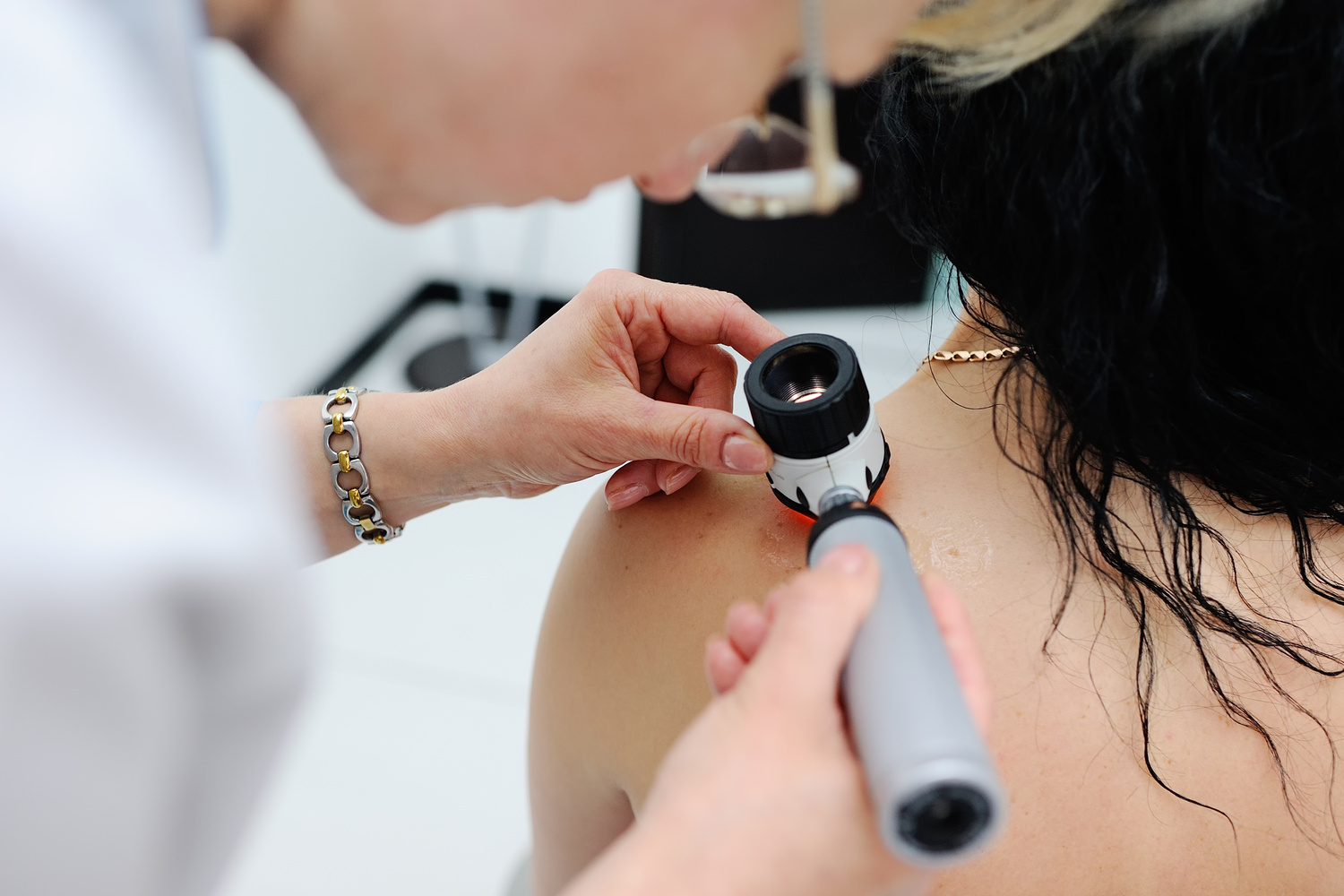
Definitive treatment of a squamous cell carcinoma
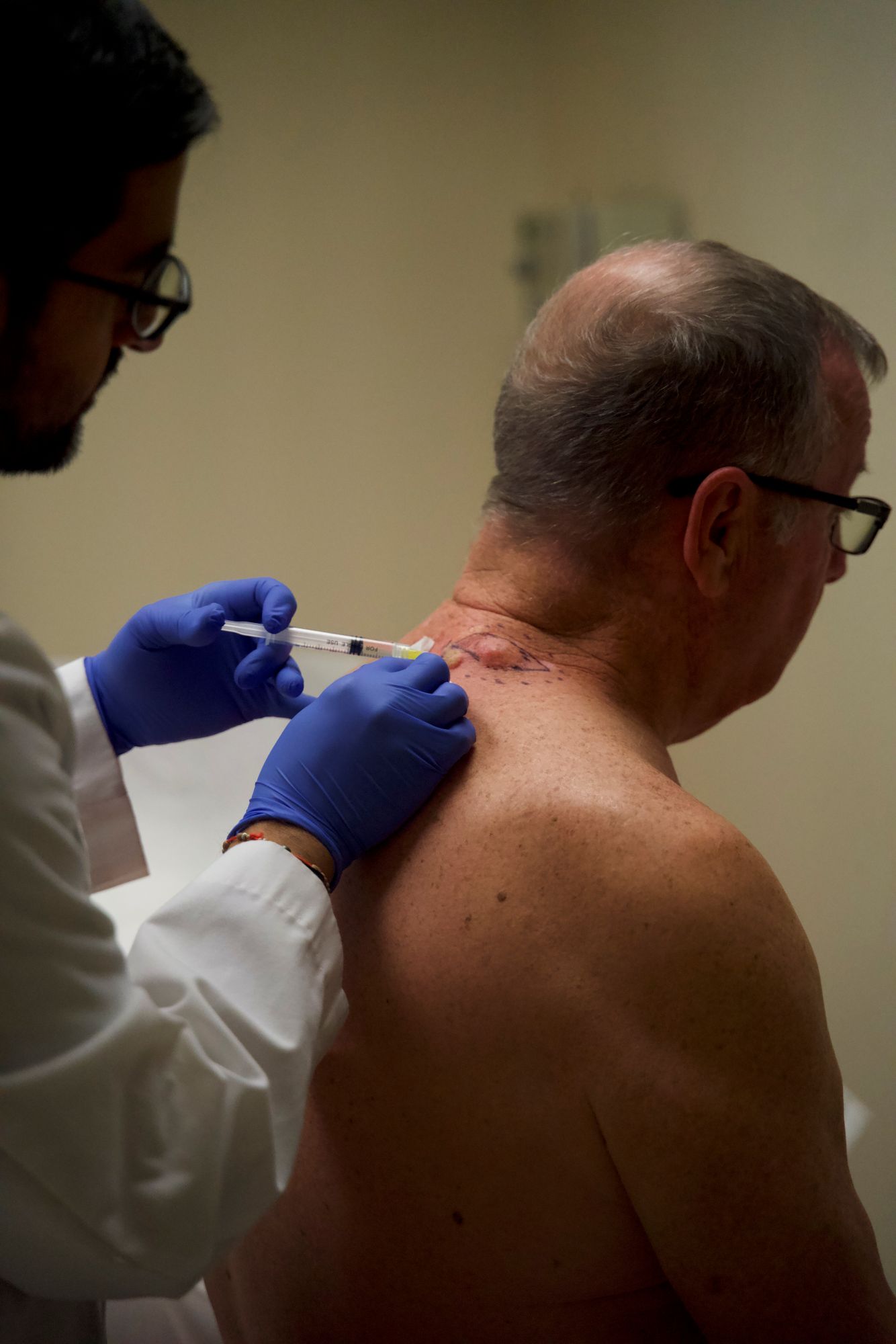
- Surgical Excision: Removes the tumor with measured margins; layered closure supports a fine scar.
- Mohs Micrographic Surgery: Preferred for high-risk sites (face, scalp, ear, lip), recurrent or aggressive tumors, or where tissue-sparing is vital; allows margin control in stages.
- ED&C (Curettage & Electrodesiccation): Option for select low-risk lesions on non-cosmetic areas.
- Topicals (5-FU, Imiquimod): Considered for SCC in situ (Bowen’s) in appropriate locations.
- Photodynamic Therapy: May be used for SCC in situ or extensive actinic damage in select cases.
- Radiation Therapy: For patients not suited to surgery or as an adjunct in challenging locations.
- Systemic Therapy: For rare advanced/metastatic disease, we coordinate immunotherapy/targeted options with oncology.
- Prevention & Surveillance: We address actinic keratoses, teach monthly self-exams, schedule regular full-body skin checks, and use lesion/mole mapping or photography to track sites over time. Daily sun protection is emphasized.
Wound Care After SCC Treatment
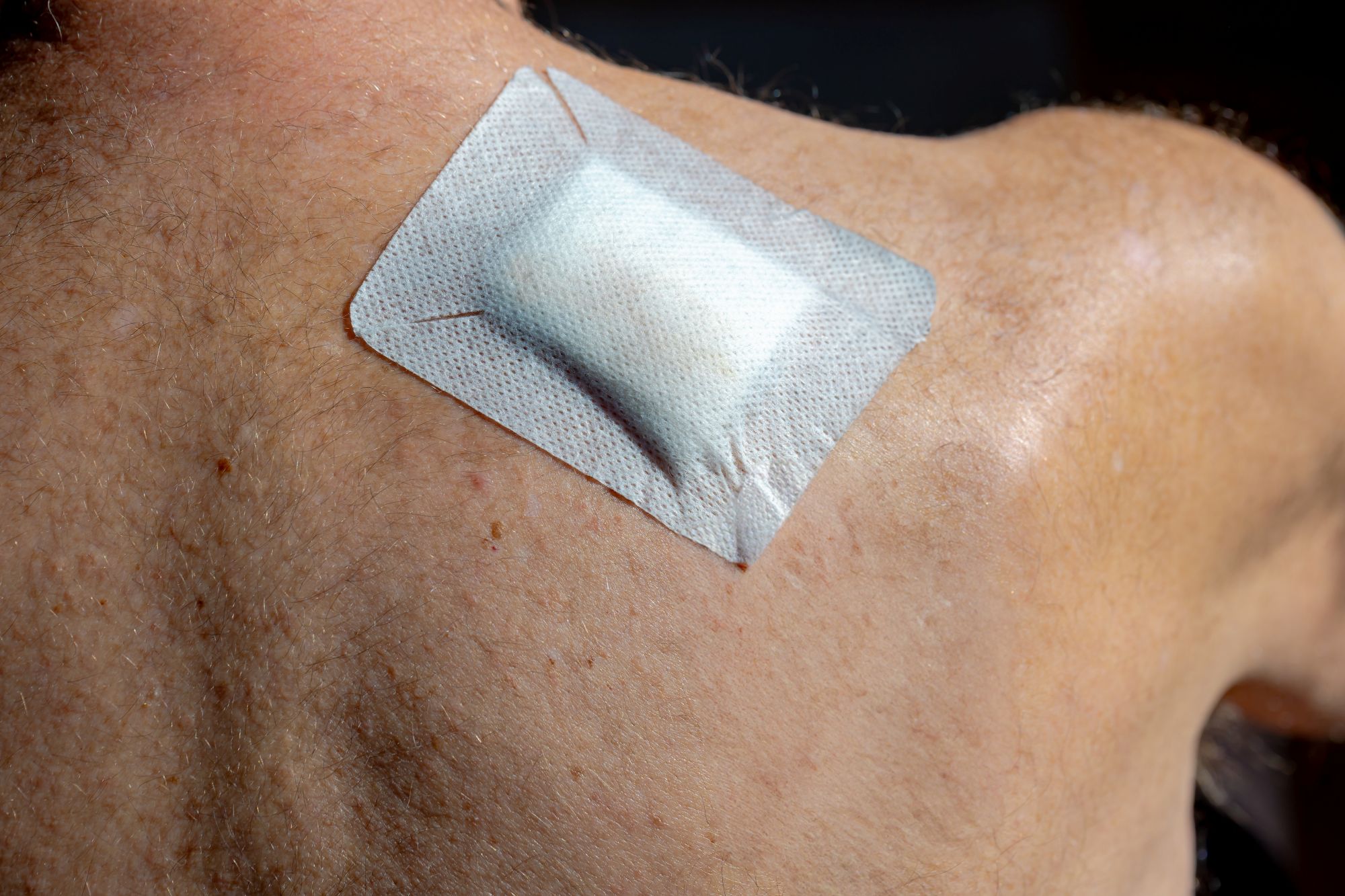
Simple Incision Care: Keep dressings as directed; cleanse gently and apply recommended ointment. Mild soreness or tightness is common.
Stitches & Activity: Sutures are usually removed in 5–14 days depending on location. Limit movements that pull on the site until cleared.
Scar Optimization: We may discuss silicone, massage, and consistent sun protection. For Mohs or larger sites, we outline tailored steps and expected milestones.
Node Awareness: For higher-risk tumors, we review signs of lymph node changes and when to contact us promptly.
Our aim is comfortable, predictable healing with results that look and feel natural—backed by clear, written instructions.
Why Choose Aesthetic Dermatology Associates for
SCC Care?
Precision and Expertise
Advanced Techniques
From layered closures and reconstructive planning to digital photography and lesion mapping, we pair meticulous technique with thoughtful cosmetic strategy for every anatomic site.
Comprehensive Support
You’ll receive step-by-step guidance—from diagnosis to recovery—plus prevention counseling, rapid communication of pathology results, and a reliable follow-up schedule.
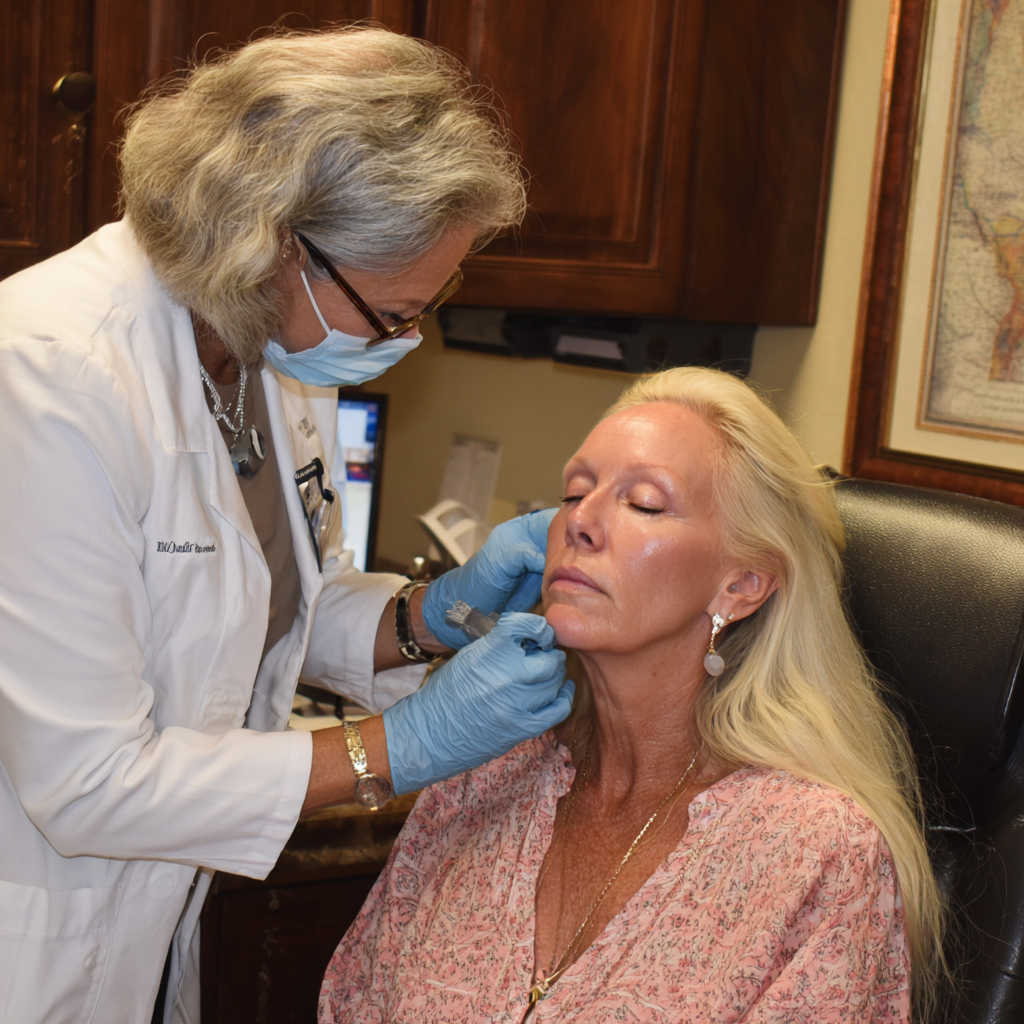
What to Expect During and After Your Treatment
- 01. Pre-Treatment Preparation
- Bring a list of non-healing or changing spots and your medications (including blood thinners). Avoid self-tanner and remove makeup over the area. Continue usual medicines unless we advise otherwise for a procedure.
- 02. Treatment Visit
- We confirm the plan, review options, and proceed—often the same day for low-risk lesions. Local anesthetic keeps you comfortable. For Mohs, tissue is checked in stages until margins are clear, followed by reconstruction as needed. Before you leave, we review care and recovery.
- 03. Post-Treatment Follow-Up
- You’ll get written wound-care instructions, suture timing, and scar-care tips. We schedule regular skin checks and teach self-exam basics to catch new or changing areas early. Prevention steps—broad-spectrum SPF, protective clothing, shade, and avoiding tanning beds—help reduce future cancers.

Common Questions About Squamous Cell Carcinoma (SCC) Treatment
Find answers to common questions about recognition, risk, prevention, and accuracy.
- What does squamous cell carcinoma usually look like?
- Typical signs include a scaly red patch, a thick, crusted or wart-like bump, or a sore that doesn’t heal and may be tender or bleed. On the lip or ear, SCC may be more aggressive—don’t ignore persistent changes.
- What increases my risk of squamous cell carcinoma?
- Cumulative sun/UV exposure, fair skin or light eyes, actinic keratoses, prior radiation or burns, chronic ulcers/scars, tanning bed use, older age, immunosuppression (including organ transplant), and certain HPV types raise risk.
- How can I prevent future squamous cell carcinoma?
- Use broad-spectrum sunscreen daily, wear hats and UPF clothing, seek shade during peak UV, and avoid tanning beds. Treat actinic keratoses promptly. Perform monthly self-exams and keep regular professional skin checks.
- What role does dermoscopy play?
- Dermoscopy reveals subsurface patterns—vascular clues, scale/crust borders, keratin features—improving diagnostic accuracy and helping us choose the most effective, tissue-sparing treatment.
Board-Certified Dermatologists
We Are Squamous Cell Carcinoma Treatment Specialists
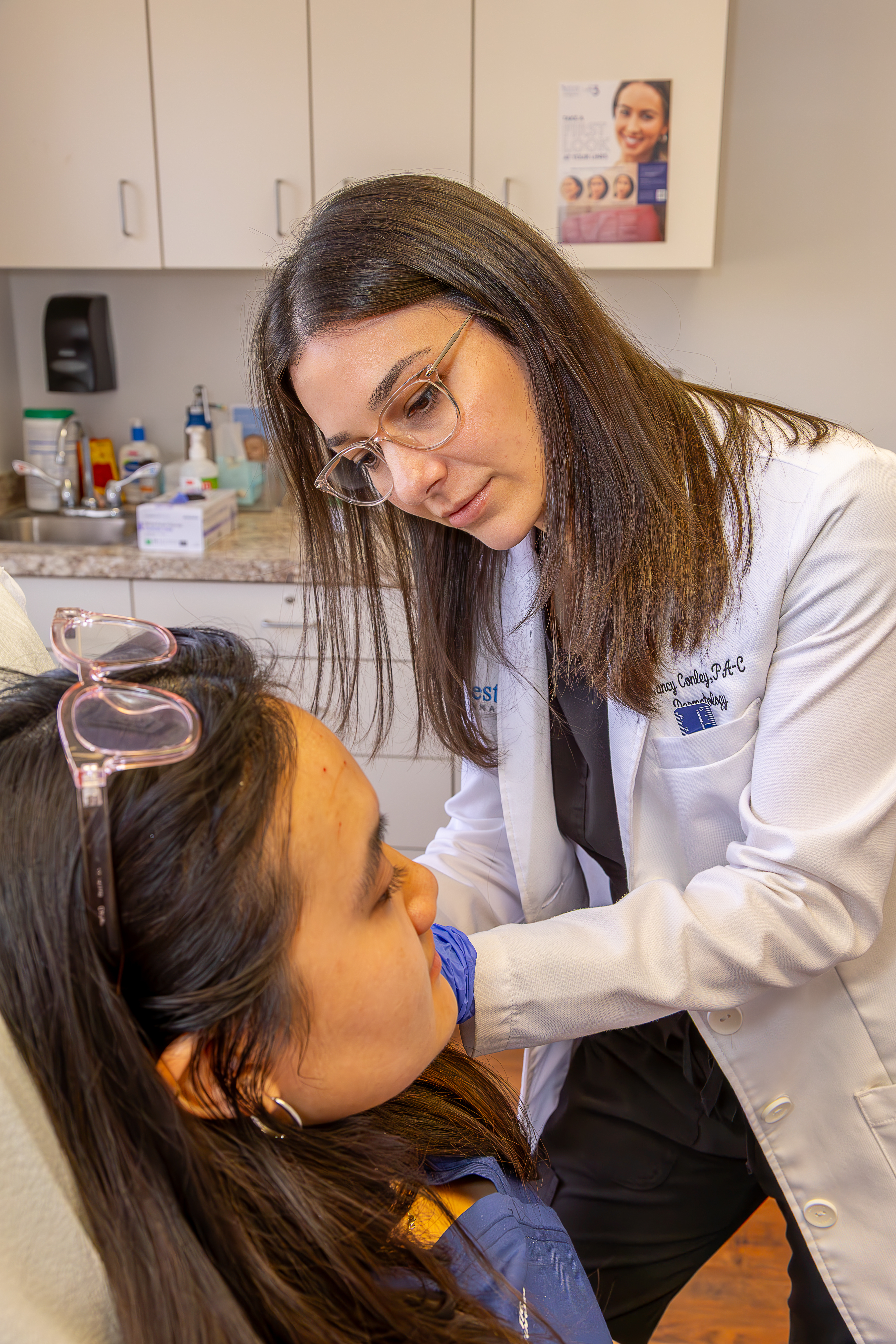
Highly Skilled Dermatologists
We combine careful dermoscopy, precise surgery (including Mohs when appropriate), and clear communication so you understand your choices and feel secure from the first visit through full recovery.
A Commitment to Patient Care
Your safety, comfort, and cosmetic outcome guide every decision. We provide realistic expectations, prompt results, and ongoing prevention support—so you can move forward knowing you’re in expert hands.
Take the First Step Toward Effective SCC Care
If you have a non-healing or changing spot, or you’re due for a thorough skin exam—schedule a visit at Aesthetic Dermatology. We’ll evaluate carefully, treat decisively, and craft a prevention plan that protects your skin for the long term.
Visit Our Locations
Media, PA
| Mon: | 7:30 am - 5:30 pm |
| Tue: | 8:00 am - 4:00 pm |
| Wed: | 7:30 am - 4:00 pm |
| Thu: | 7:30 am - 4:00 pm |
| Fri: | 7:30 am - 3:15 pm |
Paoli, PA
| Mon: | 8:00 AM - 4:30 PM |
| Tue: | 8:00 AM - 4:00 PM |
| Wed: | 8:00 AM - 5:30 PM |
| Thu: | 8:00 AM - 4:30 PM |
| Fri: | 8:00 AM - 5:00 PM |
Stay Informed with our Newsletter

Book Your Appointment Today!
Choose the option that works best for you:
Prefer to speak with someone? Call or text us:

Media, PA Office - Call or Text (610) 566-7300

Paoli, PA Office - Call or Text (610) 647-4161
Want to book online now? Select a provider below:
Note: Self-scheduling is currently available for Dr. Ko & Bridget Lolli. For all other providers, please call or text the office.